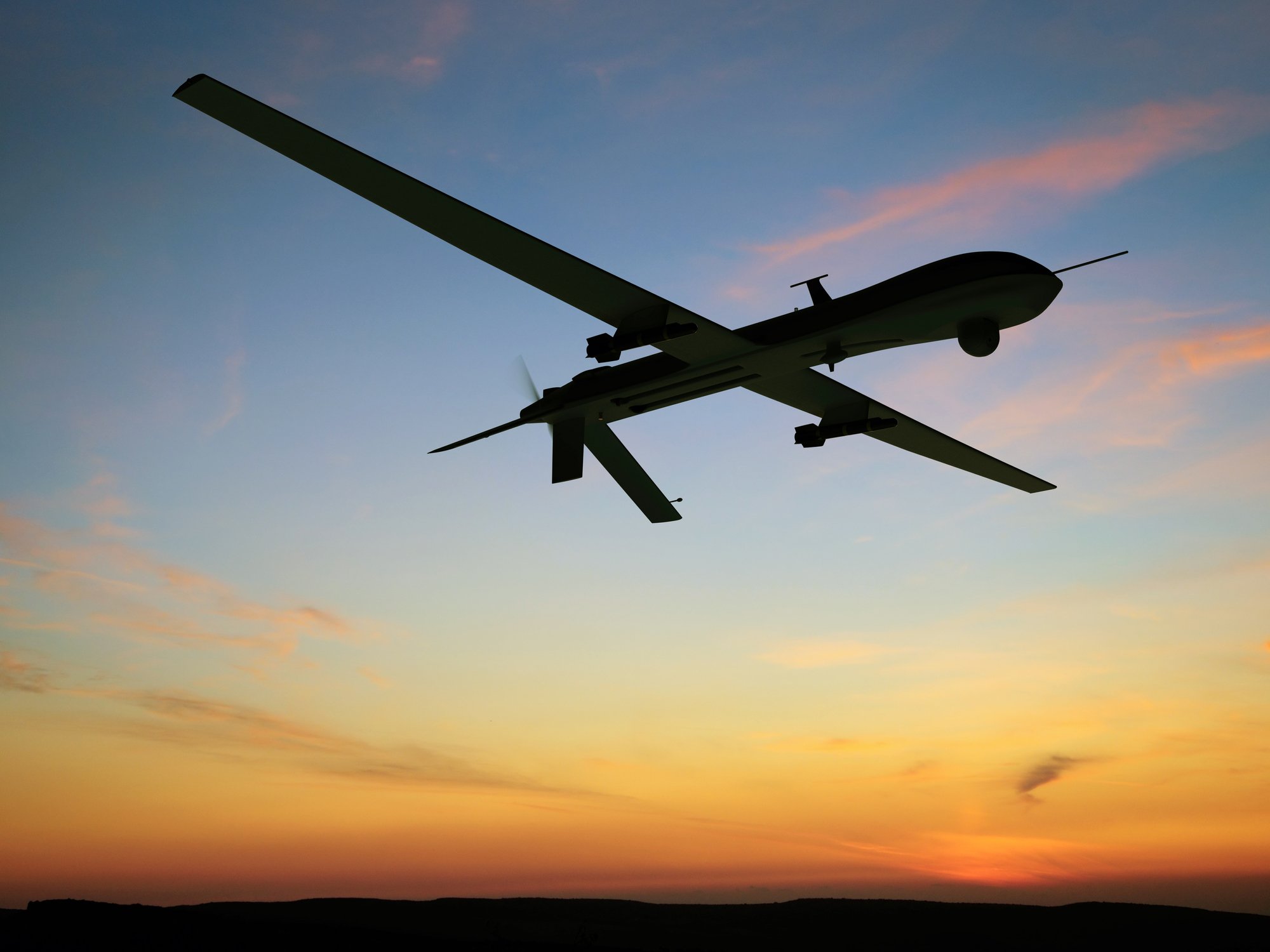"The higher you climb, the more that you see."
-- Folk singer Dan Fogelberg
For decades, that's been true, and some of the best "seeing" that humans have done in years past has been done with the help of satellites. These multi-ton hunks of metal orbit the globe, taking snapshots and shooting video with their high-tech cameras, creating the images we see today on Mapquest, Google Earth, and Apple Maps.
Satellites have proven themselves invaluable in producing detailed, high-altitude photography. The problem is, they cost a lot -- both to build and to launch into space. (Even space start-up SpaceX charges $62 million to put a satellite in orbit.)
So, here's the thing investors need to be aware of: Drones can do the job of aerial photography cheaper and, in many ways, better than satellites.

Image source: Getty Images.
When price is an object
In contrast to multimillion-dollar satellites, a camera-equipped drone can cost just a few tens of thousands of dollars (or less) to build. And because things are easier to see closer than farther away, low-flying drones are in some ways more useful for photographers than satellites would be.
Operators say that camera-carrying drones offer much higher resolution images than those that a satellite, operating from hundreds of miles up, can capture. So if, for example, a commercial satellite in low earth orbit offers resolution of 30 centimeters per pixel (as DigitalGlobe claims theirs do), a photograph taken from a UAV (unmanned aerial vehicle -- the official term for a drone) flying at 500 feet might capture images 30 times more detailed -- as little as 1 centimeter per pixel.
Who makes drones for photographers?
Who builds these drones for photographers, you ask? Oh, all sorts of companies. Depending on what kind of photography you need to take, you can find a camera drone at the right price point for it, and a manufacturer willing to build it.
At the high end -- very high -- Airbus (EADSY 2.02%) is developing Zephyr solar-powered UAVs designed to circle the globe miles in the sky and for weeks at a time. Although Zephyr probably won't come cheap, Airbus is billing it as a "pseudo-satellite" capable of performing wide-panned photography over enormous vistas of landmass -- without the multimillion-dollar rocket launch costs necessary to put a satellite in orbit.
A bit lower to Earth, AeroVironment's (AVAV 2.37%) new Quantix UAV is designed to fly just a few hundred feet off the ground, taking photographs, video, and multi-spectral images of infrastructure, agricultural farmland, and other sites of commercial interest. AeroVironment hasn't announced a price point for its camera drone, either, but Quantix's specifications (three-foot wingspan, 45-minute endurance, 40 mph top speed) look similar to the specs for AV's Wasp UAV for the military. That one costs $49,000 per unit, so I'd expect a similar price point for Quantix.
Smaller companies needing the services of photography drones may balk at even a $49,000 price tag on a camera drone, however. For hobbyist photographers and small businesses that want to use drones for film-making, aerial surveillance, and the like, it may be more economical to buy and repurpose drones marketed primarily to consumers-- DJI Phantoms, Xiaomi Mis, Parrot ARs, and the like.
They won't fly as high, nor see as much -- but at a cost of $1,000 or less per camera drone, they'll be a lot more affordable -- making aerial imaging accessible to more companies than ever before.
So what should investors be looking to result from this new availability of cheap, detailed imagery from drones carrying cameras? One opportunity may lie in the drone makers themselves. According to Transparency Market Research, the global market for aerial imagery was $1.36 billion in 2016, and is likely to rise to $4.58 billion by 2025 -- a 14.6% annual growth rate. Among drone makers, AeroVironment is an emerging leader -- but also a very high-priced stock at more than 70 times earnings. Airbus stock is cheaper -- but at 47 times earnings, not by much. (And aeronautics behemoth Airbus is obviously a much less focused play on drones for photographers.) At the same time, most of the makers of the cheaper, smaller, consumer-oriented drones that are growing so popular remain private companies, and thus difficult to invest in at all.
What's an investor to do? My advice would be not to try to invest in drone stocks, per se, right now. They're either too expensive to invest in or entirely inaccessible to investment at this time. (That may change as more drone companies IPO, but for now the situation is what it is.) Rather, investors would be better advised to seek out companies making use of cheaper aerial imaging from camera drones to make their businesses more efficient -- agricultural companies using photographs taken by drone to improve crop performance, oil companies using drone imagery to better maintain their infrastructure and cut down on maintenance costs, and so on.
This is not the most obvious way to invest in the arrival of aerial drones and the cheap aerial imaging they're providing -- but for now, it's probably the best way.






